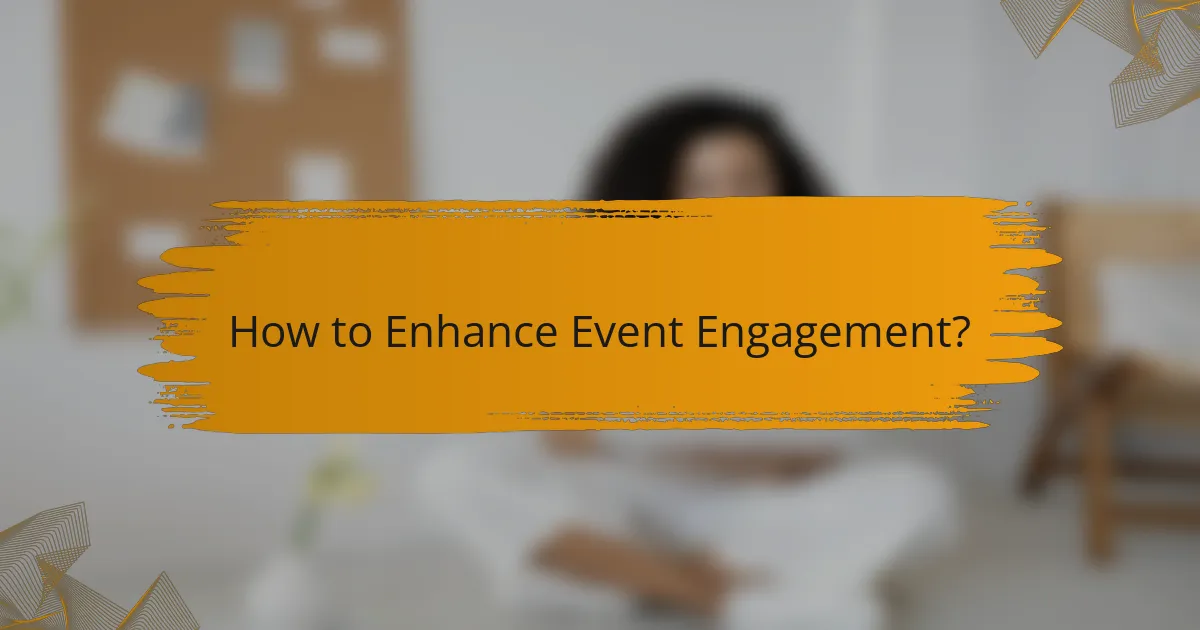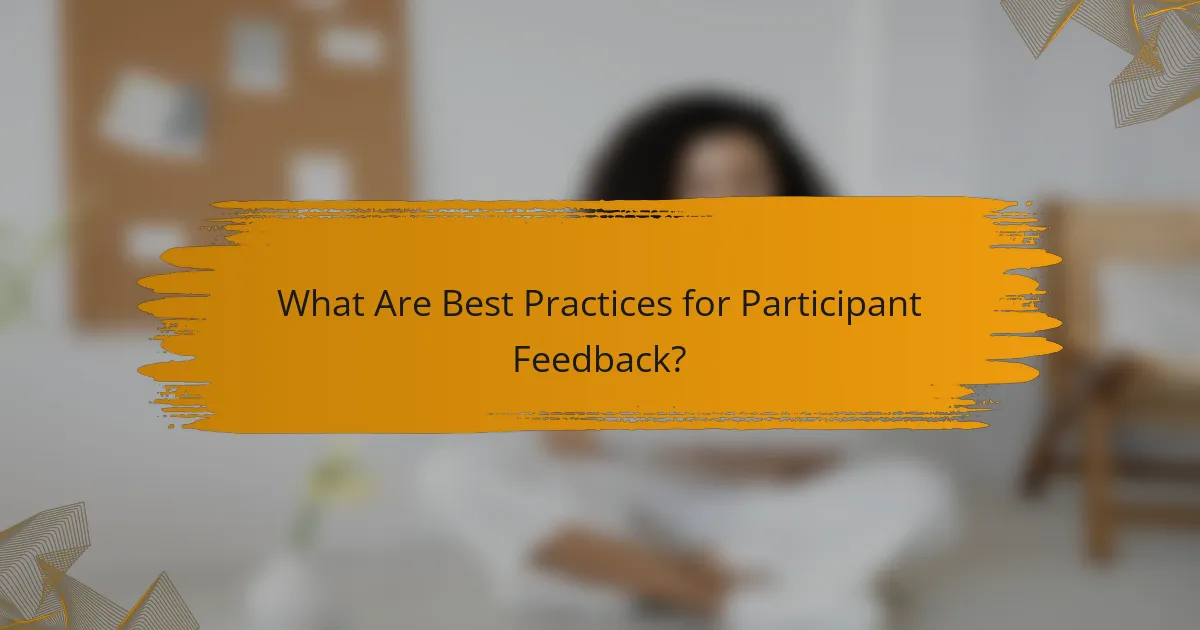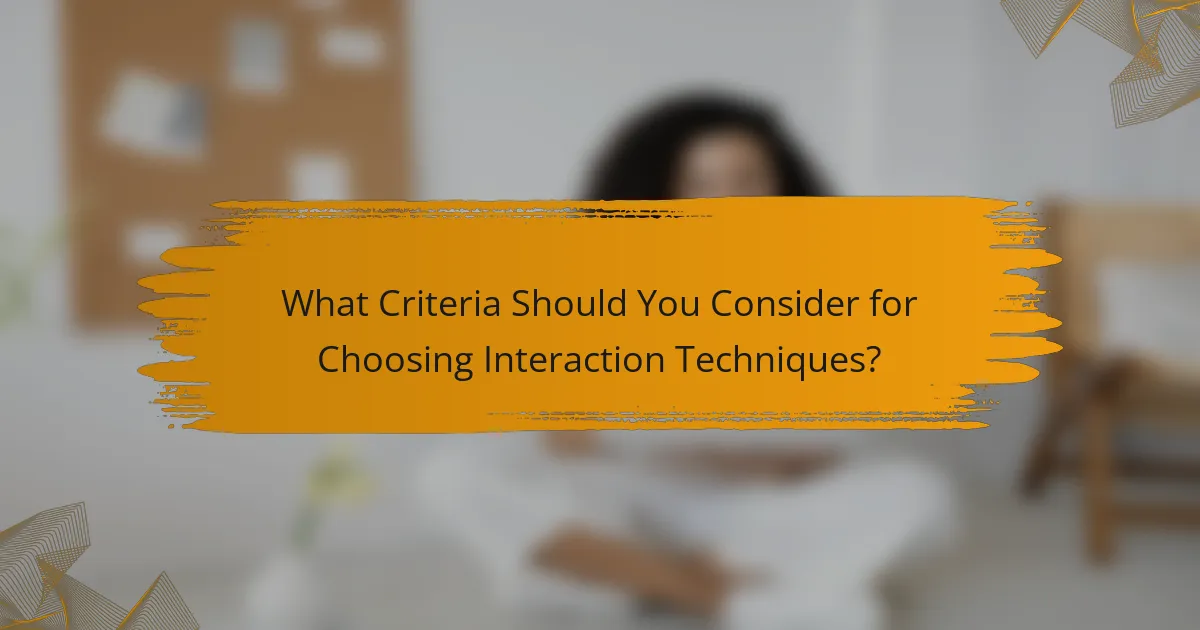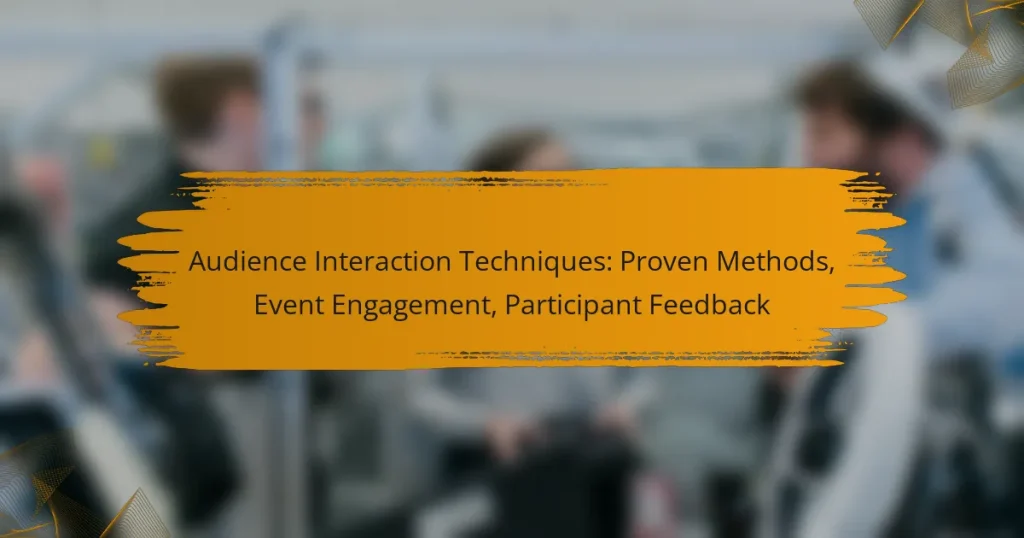Effective audience interaction techniques are essential for engaging participants during events, significantly enhancing their experience and feedback. By employing various interactive methods, organizers can foster communication and create a dynamic atmosphere that encourages active participation. Additionally, gathering actionable insights through structured surveys and real-time feedback tools can lead to continuous improvement for future events.

What Are Effective Audience Interaction Techniques?
Effective audience interaction techniques are strategies designed to engage participants actively during events, enhancing their overall experience and feedback. These methods foster communication, encourage participation, and create a more dynamic atmosphere.
Interactive polls
Interactive polls are a real-time way to gauge audience opinions and preferences. They can be conducted through mobile apps or web platforms, allowing participants to vote on questions related to the event topic.
To implement polls effectively, keep questions clear and concise. Aim for a mix of multiple-choice and open-ended questions to gather diverse insights. Consider using tools like Mentimeter or Slido for seamless integration.
Live Q&A sessions
Live Q&A sessions provide an opportunity for participants to ask questions directly to speakers or panelists. This format encourages engagement and allows for clarification on topics discussed during the event.
To maximize participation, allocate specific time slots for Q&A and promote them in advance. Use platforms that allow audience members to submit questions anonymously to increase comfort and honesty.
Gamification elements
Incorporating gamification elements can make events more enjoyable and interactive. Techniques such as quizzes, leaderboards, and rewards can motivate participants to engage more actively.
When designing gamified experiences, ensure that the activities align with the event’s goals. Simple rewards, like gift cards or recognition, can incentivize participation without overwhelming the audience.
Networking opportunities
Networking opportunities facilitate connections among participants, enhancing the overall event experience. Structured networking sessions, such as speed networking or themed meetups, can help attendees engage meaningfully.
To create effective networking opportunities, provide clear guidelines and time limits. Consider using event apps that allow attendees to schedule one-on-one meetings based on shared interests.
Breakout discussions
Breakout discussions involve dividing participants into smaller groups to discuss specific topics in depth. This approach encourages more intimate conversations and allows for diverse perspectives to emerge.
When organizing breakout sessions, provide clear objectives and discussion prompts. Limit group sizes to ensure everyone can contribute, and consider appointing a facilitator to guide the conversation and keep it on track.

How to Enhance Event Engagement?
Enhancing event engagement involves actively involving participants through various interactive techniques that foster connection and feedback. By implementing effective strategies, organizers can create memorable experiences that resonate with attendees.
Utilizing social media
Social media platforms are powerful tools for enhancing event engagement. They allow real-time interaction, enabling participants to share their experiences, ask questions, and connect with others. Consider creating dedicated event hashtags to streamline conversations and encourage attendees to post updates.
Engagement can be further amplified by live streaming sessions or sharing behind-the-scenes content. This not only keeps remote participants involved but also builds excitement among those attending in person.
Incorporating multimedia
Multimedia elements such as videos, infographics, and interactive presentations can significantly boost engagement. These formats cater to different learning styles and can make complex information more digestible. For instance, using short video clips during presentations can illustrate key points effectively.
When incorporating multimedia, ensure that the content is relevant and enhances the overall message. Avoid overwhelming attendees with excessive visuals; instead, aim for a balanced mix that supports your objectives.
Creating immersive experiences
Immersive experiences engage participants on a deeper level by allowing them to actively participate rather than passively observe. This can include hands-on workshops, simulations, or virtual reality setups that relate to the event’s theme. Such experiences can lead to higher retention of information and stronger connections among attendees.
To create an immersive environment, consider the venue layout and how it can facilitate interaction. Ensure that activities are well-organized and that participants have clear instructions to maximize their involvement. Avoid common pitfalls such as overcrowding or unclear objectives, which can detract from the experience.

What Are Best Practices for Participant Feedback?
Best practices for participant feedback focus on gathering actionable insights to improve future events. Effective methods include structured surveys, real-time feedback tools, and in-depth discussions that engage attendees and encourage honest responses.
Post-event surveys
Post-event surveys are a common and effective way to collect participant feedback. They typically include a mix of quantitative questions, such as rating scales, and qualitative questions that allow for open-ended responses. Aim to keep surveys concise, ideally under 10 questions, to maximize completion rates.
Consider incentivizing participation with small rewards, such as discounts on future events or entry into a prize draw. This can significantly boost response rates and provide you with a more comprehensive understanding of attendee experiences.
Real-time feedback tools
Real-time feedback tools enable participants to share their thoughts during the event, allowing for immediate adjustments. Platforms like live polling or Q&A sessions can be integrated into presentations to gauge audience reactions and gather opinions on specific topics.
Using these tools encourages engagement and can help identify areas needing improvement while the event is still ongoing. Ensure that the technology is user-friendly and accessible to all participants to maximize engagement.
Focus group discussions
Focus group discussions provide a platform for in-depth feedback from a select group of participants. These discussions can reveal deeper insights into attendee experiences and preferences that surveys may not capture. Aim for groups of 6-10 participants to facilitate open dialogue.
When conducting focus groups, prepare guiding questions but allow for organic conversation. This approach can uncover valuable insights about event content, logistics, and overall satisfaction, helping you tailor future events to better meet participant needs.

What Criteria Should You Consider for Choosing Interaction Techniques?
When selecting audience interaction techniques, consider factors such as demographics, event format, and technology availability. These criteria will help ensure that the chosen methods effectively engage participants and enhance their overall experience.
Audience demographics
Understanding your audience demographics is crucial for selecting appropriate interaction techniques. Consider age, cultural background, and professional experience, as these factors influence preferences for engagement methods. For instance, younger audiences may prefer digital interactions, while older participants might favor traditional methods.
Gathering demographic data through surveys or registration forms can provide insights into your audience’s characteristics. This information allows you to tailor your approach, ensuring that the techniques resonate with participants and encourage active involvement.
Event format
The format of your event significantly impacts the interaction techniques you should employ. For example, a conference may benefit from panel discussions and Q&A sessions, while a workshop might be more suited for hands-on activities and group exercises. Aligning interaction methods with the event’s structure enhances engagement and learning outcomes.
Consider the length of the event as well. Shorter sessions may require quick, impactful techniques like live polls or icebreakers, while longer events can accommodate deeper discussions and interactive workshops. Choose methods that fit seamlessly within the overall agenda to maintain participant interest.
Technology availability
Assessing the technology available for your event is essential when selecting interaction techniques. If you have access to advanced tools like audience response systems or mobile apps, you can implement more interactive methods, such as real-time feedback or gamification. Conversely, limited technology may necessitate simpler techniques like hand-raising or paper surveys.
Ensure that the chosen technology is user-friendly and accessible to all participants. Providing clear instructions and support can help mitigate potential issues and enhance the overall interaction experience. Remember to test all technology beforehand to avoid disruptions during the event.

How to Measure the Success of Interaction Techniques?
Measuring the success of interaction techniques involves assessing both engagement metrics and participant feedback. These indicators provide insights into how effectively your methods are resonating with the audience and highlight areas for improvement.
Engagement metrics
Engagement metrics are quantitative measures that help evaluate how actively participants are involved in an event. Common metrics include attendance rates, session participation, and interaction frequency, such as questions asked or polls answered. A good rule of thumb is to aim for at least 70% participation in interactive elements to gauge effectiveness.
To track these metrics, consider using tools like audience response systems or event apps that can provide real-time data. Analyzing these figures can help you identify which techniques are most effective and which may need adjustment.
Feedback analysis
Feedback analysis involves collecting and interpreting participant responses to gauge their satisfaction and engagement levels. Surveys, interviews, and informal discussions can yield valuable insights into how attendees perceive the interaction techniques used. Aim for a response rate of at least 30% for surveys to ensure a representative sample.
When analyzing feedback, look for common themes and specific suggestions. This can help you understand what worked well and what didn’t, allowing you to refine your approach for future events. Consider using a mix of quantitative ratings and qualitative comments for a comprehensive view of participant experiences.


